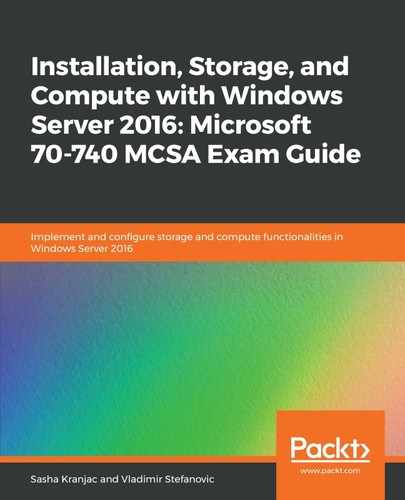In the virtualization era, you need to know how virtual machines can be clustered. There are two different approaches—host clustering and guest clustering. Before you start planning and implementing a clustering solution, you need to know what the difference between these clustering approaches is:
- Host clustering: Virtual machines are highly available and don't need any special configuration.
- Guest clustering: Virtual machines are cluster nodes and services or application on them need to be cluster-aware. Also, shared storage is mandatory.
Although, in Windows Server 2016, you can enable nested virtualization, nodes in Hyper-V cluster should be physical servers. Also, physical servers need to have both physical and virtual networks. Be aware that each node in a Hyper-V cluster should have at least three network adapters—one for network communication, one for cluster communication, and one for storage communication. If you want to implement redundant networks, you need to double the network adapters per purpose. It's very important to create the same virtual networks on all physical hosts that participate in one cluster. If a virtual machine fails over to an other node and the virtual networks are not named and configured properly, the virtual machine won't be useful. Storage is also an important component of VM clustering. You can select one of the options that we described earlier in this chapter, but storage needs to be shared.
Regarding the software requirements, all nodes in a Hyper-V cluster need to be Windows Server 2016 Standard, Datacenter, or Microsoft Hyper-V Server 2016. All nodes should have the same service packs and patches installed and have the same drivers and firmware.
